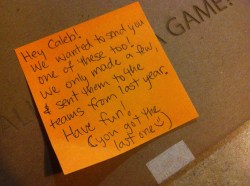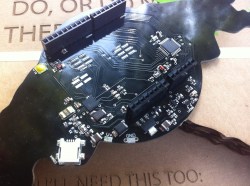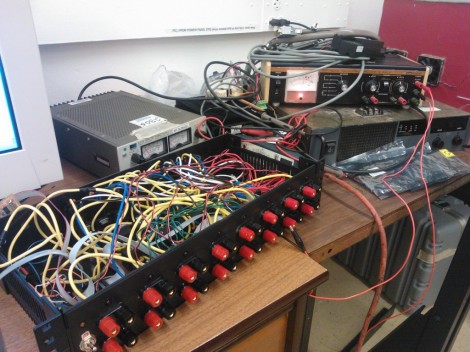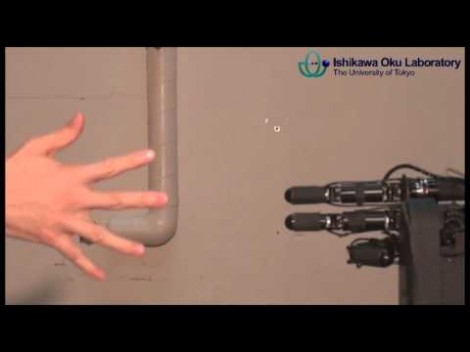As you’ve already seen, we’ve been invited to participate in the Redbull creation contest. While we were deep into our work today, hacking things apart and soldering things together while trying not to blow ourselves up, we received a second package! It had a hand written note explaining that this was the last of its type, reserved for only the most awesome teams. We got the very last one.
In this box was another bullduino. This one had a shield on it with a fancy display in the middle and a few scattered LEDs. Upon plugging it in, we were greeted with a “simon” style game that you can play using the resistive touch pads on the pcb. You can see the result in the video above. Also, my nose doesn’t work very well, but my wife informed me that the red bull mail smelled like bacon. I’m unsure if this was intentional or not.
Our project is coming long nicely. Preliminary tests today yielded fantastic results with minimal sub dermal hematoma. We look forward to unveiling this beast to the public. Stay tuned!





















